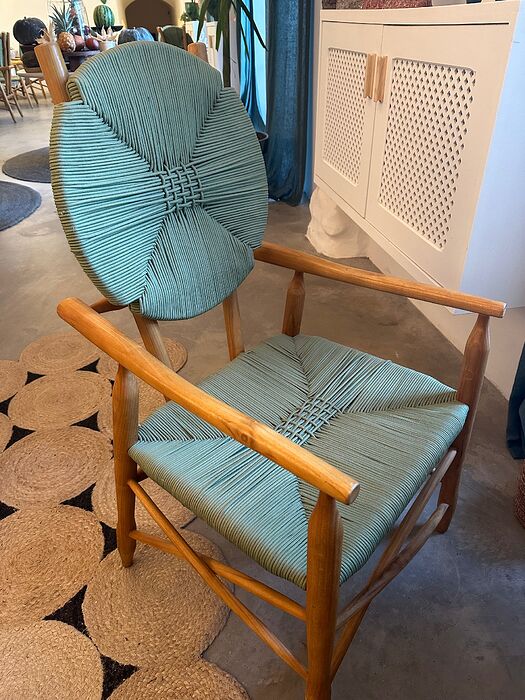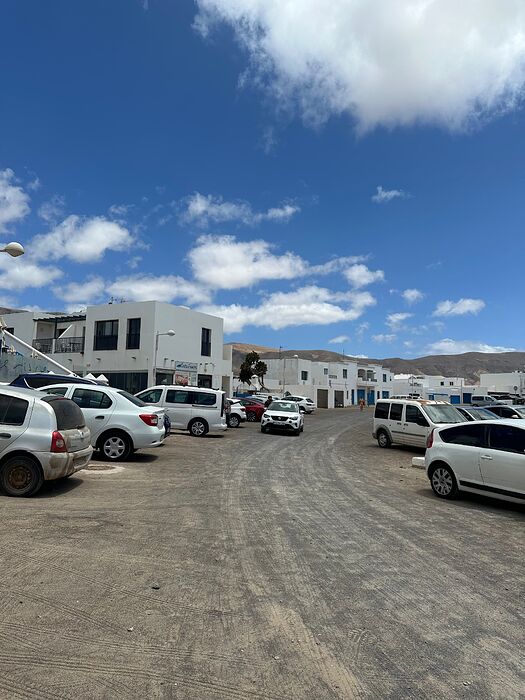Yes, for certain!
Although we spent nine nights on the island, I have the feeling that we left much unseen. I have yet to write up two other restaurants that we tried: EL RISCO in Famara, and CESAR LANZAROTE in Teguise, which was one of the “hits” of our stay…
From the small amount of online reading I have done, it appears that many visitors to the island concentrate on the coastal resort areas and miss the most alluring bits–the sights that make Lanzarote so special. Reading about Cesar Manrique makes me wonder if ever there was one person as influential as he in maintaining, and enhancing, one small piece of our planet. Sounds a bit much to say that but reading about his works, I am astounded.
EL RISCO, Caleta de Famara on the northern coast of Lanzarote, the first restaurant we visited on the island:
I had seen a clip of this restaurant in the Jose Andres tv program in the US and it appeared to be just the kind of no frills seafood place that I gravitate to.
Indeed, the location is film-worthy: A tidy blue and white dining room looking out on the windswept sands of Famara, a surfing mecca in a village where the streets are sand and the structures are white cubes splashed with the marine blue wood trim found in most of Lanzarote’s coastal towns. (Inland towns favor green trim).
We had booked ahead (essential) and were warmly received. Service throughout was lovely and attentive, with the servers and manager addressing me by my first name.
The laid-back village of Famara, and the dining room, which was full by 4pm on a Thursday in May:
View from our table of the beach at Famara, a surfing Mecca where swimmers need to be VERY mindful of the currents; the tiny, sparsely inhabited island of La Graciosa, connected to Lanzarote by a short, frequent ferry, looms in the far distance.
Entrance to EL RISCO:
I was intent on trying a signature shellfish of the island that I believe is known in English as “limpets” and in Spanish, “lapas.” However, not once did I spy these on any menu during our stay.
While scanning the carta, we were advised that there were two items (fuera de carta," these would be known as “specials” in the US, dishes usually recited orally but not listed on the printed menu, as they should vary by the availability at market on that morning.)
One of the items offered fuera de carta were gambas from La Santa, the small port known for its lonja, where much of the prized shellfish served in Lanzarote’s restaurants is unloaded each morning, to be snapped up by restaurant buyers. (You will often see “La Santa” applied to varieties of shrimp on the island, usually meant to indicate freshness and quality).
These were medium-sized shrimp fanned out atop a black cast iron pan in a pretty presentation over an ample bed of large-flaked salt. The shrimp were excellent and I loved that they were served with the heads intact, as is usual in Spain…
(22.85 euro)
The famed “wrinkled potatoes” (papas arugulas) of the Canarias, served here with two mojos (salsas): One red (slightly spicy,) and one green, fragrant with parsley and cilantro. (6.90 euro) This is probably one of THE signature dishes of the archipelago and later in our stay, I received a lesson in preparing red mojo from the chef of our hotel. A special variety of potato is used to make this dish; we stopped at a store in Soo, not far from El Risco to learn more about this, and about other local foods.
































